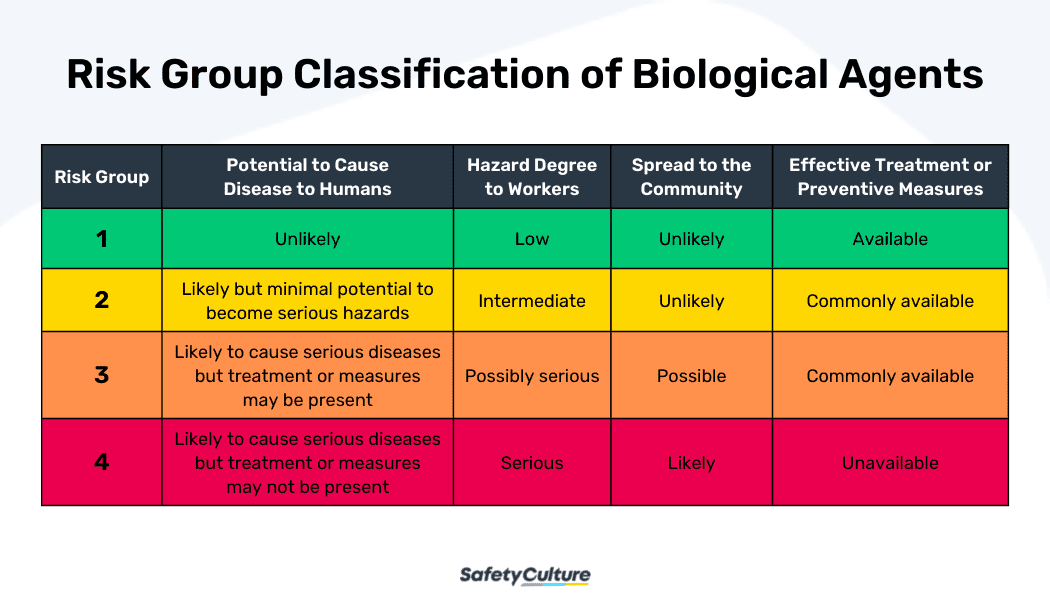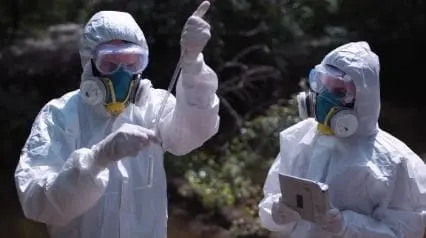What are Biological Hazards?
Also referred to as biohazards, biological hazards come from any biological substances that pose risks or threats to the health of living organisms (mostly humans and animals). In the workplace, some employees are exposed to a great amount of biological agents. This highlights the employers’ responsibility to help educate workers about the various types of biological hazards, the risks associated with them, and how to proactively manage exposure through comprehensive risk assessment and management.
What are the 4 Types of Biological Hazards?
As one of the most common workplace hazards, biological hazards have the potential to harm and infect employees, most especially those who are directly exposed to them.
While most biohazards often come from bacteria, viruses, parasites, and molds or fungi, they are further grouped into 4 major types or categories, as discussed by Assurity Consulting:
Biological agents
Some biological hazard examples under this classification include bacteria, viruses, parasites, and fungi (such as yeasts and molds). These are commonly considered harmless if kept under control, while some may cause serious risks and diseases to animal or humans like the COVID-19 virus.
Biotoxins
These refer to a group of substances with a biological origin that are toxic and poisonous to humans. Often, biotoxins are produced by plants, bacteria, insects, or certain animals, among others. Continuous exposure to these may cause, at the very least, a series of inflammatory reactions throughout the body.
Blood and blood products
While blood isn’t considered a biological hazard, it can still bring potential risks if it’s contaminated or its source is in any way infected. Also, blood products such as red blood cells, white blood cells, plasma, tissues, and platelets are also hazardous if not properly handled.
Environmental specimens
Generally, these refer to plants, soil, or water that potentially contain the first two types of biological hazards—biological agents and biotoxins.
What are the Risks of Biological Hazards?
To help organizations, Environment, Health, and Safety (EHS) managers, and workers properly identify the potential threats or risks that the various types of biological hazards pose, a system of risk group classification for biological agents is established. Also, this system is used as a guide in implementing effective measures based on the degree of risk.
Improve your EHS Management
Cultivate a safe working environment and streamline compliance with our EHS solutions.
Explore nowAccording to the World Health Organization’s Laboratory Biosafety Manual Fourth Edition, Risk Groups 1 to 4 pertain to the following:
- Risk Group 1 (low to no individual or community risk) – Biological agents or organisms that are unlikely to cause diseases to healthy humans or animals
- Risk Group 2 (moderate individual risk, low community risk) – Pathogens that are likely to cause diseases to humans or animals but have minimal potential to be serious hazards to the workers, community, or the environment
- Risk Group 3 (high individual risk, low community risk) – Pathogens causing serious diseases to humans or animals that don’t typically spread from one infected individual to another, for which preventive and treatment measures may be present
- Risk Group 4 (high individual and community risk) – Pathogens causing serious diseases to humans or animals that are directly or indirectly transmissible and for which preventive and treatment measures may not be available

Risk Group Classification of Biological Agents
In the workplace context, note that the system of classifying biological agents based on their risks considers the following factors:
- The state or level of the agent’s or organism’s ability to produce a disease
- The agent or organism is considered to be a hazard to workers
- The likelihood for the agent to be transmitted to the community
- The availability of proven preventive measures and treatment




